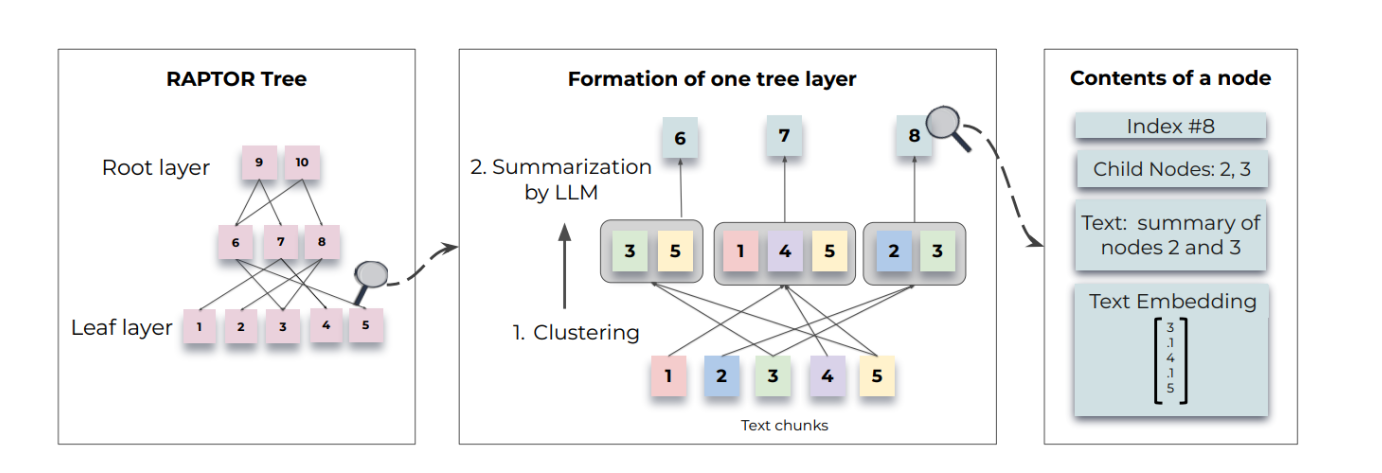CV--Swin TransFromer 你又该换Backbone了
CV方向 Transformer已经成为了“标准答案”,COCO榜前10名都是Transformer,前八名更是全部脱胎与Swin今天就一起来看看Swin Transformer的究极秘密吧!
前情提要
大家好呀,VIsion Transformer已经到第六天了随着时间的推移,难度也是在也来越大的,相信大家已经从ResNet学习到了ViT Transformer再到Diet,今天更是学习到了2021的ICCV最佳论文Swin Transformer,Swin Transformer今年在各大磅单上更是直接屠榜,COCO验证集前8全是使用Swin刷榜,而Swin原本的论文才是第八,前七全是Swin的再创新,https://paperswithcode.com/sota/object-detection-on-coco-minival?p=end-to-end-semi-supervised-object-detection
。如果今天的笔记能够帮助到你那么绝对是我莫大的荣幸。
Swin 与 VIT 的区别
Swin 与 Vit 的区别可以用一张图来说明

相比较Vit直接下采样16倍,Swin使用了窗口的理念,并使用不同的下采样倍数,并且不同的窗口的计算是互不干扰的,这样相比较Vit,大大减少了计算量并有效的获得了性能上的提升
Patch层讲解
如果你已经学过ViT的话,你应该知道VIT拥有一个PatchEmbedding层它负责将一批RGB图像由四维映射成为三维
[B,C,H,W]->[B,H*W/N/N,C*N*N]
而Swin中PatchEmbedding 的职责由Patch Partition承担,由于朱老师的PPT暂未放出所以这里引用的B站up霹雳吧啦Wz的PPT。

由于Swin Transformer不像VIt一样,Swin Fransformer是多次下采样,第一次下采样使用的是4x4的卷积核
之后会通过一个全链接层也叫Linear Embedding层将通道数由48转换为C,而其全貌则为。
但是在Swin Transformer的代码实现中是直接将Patch Partition与Linear Embedding合而为一,直接使用一个卷积核4x4大小 stride为4的卷积核直接将通道数由3转换为C。
import paddle
import paddle.nn as nn
class PatchEmbed(nn.Layer):
"""
2D Image to Patch Embedding
"""
def __init__(self, patch_size=4, in_c=3, embed_dim=96, norm_layer=nn.LayerNorm):
super().__init__()
patch_size = (patch_size, patch_size)
self.patch_size = patch_size
self.in_chans = in_c
self.embed_dim = embed_dim
self.proj = nn.Conv2D(in_c, embed_dim, kernel_size=patch_size, stride=patch_size)
self.norm = norm_layer(embed_dim) if norm_layer else nn.Identity()
def forward(self, x):
_, _, H, W = x.shape
# # padding
# # 如果输入图片的H,W不是patch_size的整数倍,需要进行padding
# pad_input = (H % self.patch_size[0] != 0) or (W % self.patch_size[1] != 0)
# if pad_input:
# # to pad the last 3 dimensions,
# # (W_left, W_right, H_top,H_bottom, C_front, C_back)
# x = F.pad(x, (0, self.patch_size[1] - W % self.patch_size[1],
# 0, self.patch_size[0] - H % self.patch_size[0],
# 0, 0))
# 下采样patch_size倍
x = self.proj(x)
_, _, H, W = x.shape
# flatten: [B, C, H, W] -> [B, C, HW]
# transpose: [B, C, HW] -> [B, HW, C]
x = paddle.transpose(x.flatten(2),(0,2,1))
x = self.norm(x)
print(x.shape)
return x, H, W
model = PatchEmbed()
paddle.summary(model,(8,3,224,224))
[8, 3136, 96]
---------------------------------------------------------------------------
Layer (type) Input Shape Output Shape Param #
===========================================================================
Conv2D-1 [[8, 3, 224, 224]] [8, 96, 56, 56] 4,704
LayerNorm-1 [[8, 3136, 96]] [8, 3136, 96] 192
===========================================================================
Total params: 4,896
Trainable params: 4,896
Non-trainable params: 0
---------------------------------------------------------------------------
Input size (MB): 4.59
Forward/backward pass size (MB): 36.75
Params size (MB): 0.02
Estimated Total Size (MB): 41.36
---------------------------------------------------------------------------
{'total_params': 4896, 'trainable_params': 4896}
PatchMerging讲解
由于Swin需要经理四次下采样,而第一次下采样是由patchemmedding
层进行处理,而之后还有三次就是由PatchMerging进行。PatchMerging会将特征图的宽和高再次下采样两倍,并且使得通道数Cx2。这里引用的图解也是引用的B站up霹雳吧啦Wz的PPT。

首先我们使用一个2x2大小的卷积核作为窗口,每个窗口都有四个像素,那么我就就把每个窗口相同位置的像素取出,并得到如第二个一样的四个特征矩阵,之后会对这四个特征矩阵在C纬度进行拼接也就得到了4xC,之后再进行一个LinearNorm层,最后通过一个Linear层进行一个线性映射变为2xC。这样
X的shape就变成了
[H/4,W/4,C]->[H/8,W/8,2*C]
class PatchMerging(nn.Layer):
r""" Patch Merging Layer.
Args:
dim (int): Number of input channels.
norm_layer (nn.Module, optional): Normalization layer. Default: nn.LayerNorm
"""
def __init__(self, dim, norm_layer=nn.LayerNorm):
super().__init__()
self.dim = dim
self.reduction = nn.Linear(4 * dim, 2 * dim, bias_attr=False)
self.norm = norm_layer(4 * dim)
def forward(self, x, H=224//4, W=224//4):
"""
x: B, H*W, C
"""
B, L, C = x.shape
print(x.shape)
assert L == H * W, "input feature has wrong size"
x = paddle.reshape(x,(B, H, W, C))
# # padding
# # 如果输入feature map的H,W不是2的整数倍,需要进行padding
# pad_input = (H % 2 == 1) or (W % 2 == 1)
# if pad_input:
# # to pad the last 3 dimensions, starting from the last dimension and moving forward.
# # (C_front, C_back, W_left, W_right, H_top, H_bottom)
# # 注意这里的Tensor通道是[B, H, W, C],所以会和官方文档有些不同
# x = F.pad(x, (0, 0, 0, W % 2, 0, H % 2))
x0 = x[:, 0::2, 0::2, :] # [B, H/2, W/2, C]
x1 = x[:, 1::2, 0::2, :] # [B, H/2, W/2, C]
x2 = x[:, 0::2, 1::2, :] # [B, H/2, W/2, C]
x3 = x[:, 1::2, 1::2, :] # [B, H/2, W/2, C]
x = paddle.concat([x0, x1, x2, x3], -1) # [B, H/2, W/2, 4*C]
x = paddle.reshape(x,(B, -1, 4 * C)) # [B, H/2*W/2, 4*C]
x = self.norm(x)
x = self.reduction(x) # [B, H/2*W/2, 2*C]
print(x.shape)
return x
model = PatchMerging(96)
paddle.summary(model,(8,3136,96))
[8, 3136, 96]
[8, 784, 192]
---------------------------------------------------------------------------
Layer (type) Input Shape Output Shape Param #
===========================================================================
LayerNorm-2 [[8, 784, 384]] [8, 784, 384] 768
Linear-1 [[8, 784, 384]] [8, 784, 192] 73,728
===========================================================================
Total params: 74,496
Trainable params: 74,496
Non-trainable params: 0
---------------------------------------------------------------------------
Input size (MB): 9.19
Forward/backward pass size (MB): 27.56
Params size (MB): 0.28
Estimated Total Size (MB): 37.03
---------------------------------------------------------------------------
{'total_params': 74496, 'trainable_params': 74496}
Swin TansFormer Block 讲解
与VIT TransFormer的Block层相似,Swin TransFormer与之不同的就是使用了S-MSA与SW-MSA来代替MSA,其他都没有改变
S-SMA与SW-MSA暂时有点难,咱们分到明天再去进行讲解,今天咱们先把整个Block模块进行实现
可以看到Block层是先经过一个LayerNorm然后经过S-MSA或者SW-MSA然后在进过一个Dropout或者是DropPath层,然后进行一个短接,然后再进行一个LayerNrom之后再进行一个Mlp再接一个Dropout或者是DropPath层,然后再来一个短接,这样一个Block层就实现了。
下面我先先来实现之前已经讲过Mlp层。
Mlp讲解

Mlp之前朱老师已经讲的很清楚了就是一个Linear层将通道数×4,然后经过GELU激活函数,然后再经过一个Dropout层再经过一个Linear层将通道数变回到原来的通道数,之后再接一个Dropout层
class Mlp(nn.Layer):
""" MLP as used in Vision Transformer, MLP-Mixer and related networks
"""
def __init__(self, in_features, hidden_features=None, out_features=None, act_layer=nn.GELU, drop=0.):
super().__init__()
out_features = out_features or in_features
hidden_features = hidden_features or in_features
self.fc1 = nn.Linear(in_features, hidden_features)
self.act = act_layer()
self.drop1 = nn.Dropout(drop)
self.fc2 = nn.Linear(hidden_features, out_features)
self.drop2 = nn.Dropout(drop)
def forward(self, x):
print(x.shape)
x = self.fc1(x)
x = self.act(x)
x = self.drop1(x)
x = self.fc2(x)
x = self.drop2(x)
print(x.shape)
return x
model = Mlp(768)
paddle.summary(model,(8,197,768))
[8, 197, 768]
[8, 197, 768]
---------------------------------------------------------------------------
Layer (type) Input Shape Output Shape Param #
===========================================================================
Linear-2 [[8, 197, 768]] [8, 197, 768] 590,592
GELU-1 [[8, 197, 768]] [8, 197, 768] 0
Dropout-1 [[8, 197, 768]] [8, 197, 768] 0
Linear-3 [[8, 197, 768]] [8, 197, 768] 590,592
Dropout-2 [[8, 197, 768]] [8, 197, 768] 0
===========================================================================
Total params: 1,181,184
Trainable params: 1,181,184
Non-trainable params: 0
---------------------------------------------------------------------------
Input size (MB): 4.62
Forward/backward pass size (MB): 46.17
Params size (MB): 4.51
Estimated Total Size (MB): 55.29
---------------------------------------------------------------------------
{'total_params': 1181184, 'trainable_params': 1181184}
SwinTransformerBlock层实现
下面就是Block层的实现,这里有一个WindowAttention就是S-MSA与SW-MSA的实现,这里就先简单定义一下,没有任何内容。
class WindowAttention(nn.Layer):
def __init__(self,dim, window_size, num_heads, qkv_bias,attn_drop, proj_drop):
super().__init__()
pass
def forward(self,x):
return x,x
class SwinTransformerBlock(nn.Layer):
""" Swin Transformer Block.
dim (int): Number of input channels.
num_heads (int): Number of attention heads.
window_size (int): Window size.
shift_size (int): Shift size for SW-MSA.
mlp_ratio (float): Ratio of mlp hidden dim to embedding dim.
qkv_bias (bool, optional): If True, add a learnable bias to query, key, value. Default: True
drop (float, optional): Dropout rate. Default: 0.0
attn_drop (float, optional): Attention dropout rate. Default: 0.0
drop_path (float, optional): Stochastic depth rate. Default: 0.0
act_layer (nn.Module, optional): Activation layer. Default: nn.GELU
norm_layer (nn.Module, optional): Normalization layer. Default: nn.LayerNorm
"""
def __init__(self, dim, num_heads, window_size=7, shift_size=0,
mlp_ratio=4., qkv_bias=True, drop=0., attn_drop=0., drop_path=0.,
act_layer=nn.GELU, norm_layer=nn.LayerNorm):
super().__init__()
self.dim = dim
self.num_heads = num_heads
self.window_size = window_size
self.shift_size = shift_size
self.mlp_ratio = mlp_ratio
assert 0 <= self.shift_size < self.window_size, "shift_size must in 0-window_size"
self.norm1 = norm_layer(dim)
self.attn = WindowAttention(
dim, window_size=(self.window_size, self.window_size), num_heads=num_heads, qkv_bias=qkv_bias,
attn_drop=attn_drop, proj_drop=drop)
self.drop_path = nn.Dropout(0) #if drop_path > 0. else nn.Identity()
self.norm2 = norm_layer(dim)
mlp_hidden_dim = int(dim * mlp_ratio)
self.mlp = Mlp(in_features=dim, hidden_features=mlp_hidden_dim, act_layer=act_layer, drop=drop)
def forward(self, x):
H, W = 56, 56
B, L, C = x.shape
assert L == H * W, "input feature has wrong size"
shortcut = x
x = self.norm1(x)
x = paddle.reshape(x,(B, H, W, C))
# # pad feature maps to multiples of window size
# # 把feature map给pad到window size的整数倍
# pad_l = pad_t = 0
# pad_r = (self.window_size - W % self.window_size) % self.window_size
# pad_b = (self.window_size - H % self.window_size) % self.window_size
# x = F.pad(x, (0, 0, pad_l, pad_r, pad_t, pad_b))
_, Hp, Wp, _ = x.shape
#--------------------------------------------------------------------------------------------------#
# S-MSA暂不处理,下次再说
#--------------------------------------------------------------------------------------------------#
# # cyclic shift
# if self.shift_size > 0:
# shifted_x = torch.roll(x, shifts=(-self.shift_size, -self.shift_size), dims=(1, 2))
# else:
# shifted_x = x
# attn_mask = None
# # partition windows
# x_windows = window_partition(shifted_x, self.window_size) # [nW*B, Mh, Mw, C]
# x_windows = x_windows.view(-1, self.window_size * self.window_size, C) # [nW*B, Mh*Mw, C]
# # W-MSA/SW-MSA
# attn_windows = self.attn(x_windows, mask=attn_mask) # [nW*B, Mh*Mw, C]
# # merge windows
# attn_windows = attn_windows.view(-1, self.window_size, self.window_size, C) # [nW*B, Mh, Mw, C]
# shifted_x = window_reverse(attn_windows, self.window_size, Hp, Wp) # [B, H', W', C]
# # reverse cyclic shift
# if self.shift_size > 0:
# x = torch.roll(shifted_x, shifts=(self.shift_size, self.shift_size), dims=(1, 2))
# else:
# x = shifted_x
# if pad_r > 0 or pad_b > 0:
# # 把前面pad的数据移除掉
# x = x[:, :H, :W, :].contiguous()
#--------------------------------------------------------------------------------------------------#
x = paddle.reshape(x,(B,H*W,C))
x = shortcut + self.drop_path(x)
x = x + self.drop_path(self.mlp(self.norm2(x)))
return x
model = SwinTransformerBlock(96,3)
paddle.summary(model,(8,3136,96))
[8, 3136, 96]
[8, 3136, 96]
---------------------------------------------------------------------------
Layer (type) Input Shape Output Shape Param #
===========================================================================
LayerNorm-3 [[8, 3136, 96]] [8, 3136, 96] 192
Dropout-3 [[8, 3136, 96]] [8, 3136, 96] 0
LayerNorm-4 [[8, 3136, 96]] [8, 3136, 96] 192
Linear-4 [[8, 3136, 96]] [8, 3136, 384] 37,248
GELU-2 [[8, 3136, 384]] [8, 3136, 384] 0
Dropout-4 [[8, 3136, 384]] [8, 3136, 384] 0
Linear-5 [[8, 3136, 384]] [8, 3136, 96] 36,960
Dropout-5 [[8, 3136, 96]] [8, 3136, 96] 0
Mlp-2 [[8, 3136, 96]] [8, 3136, 96] 0
===========================================================================
Total params: 74,592
Trainable params: 74,592
Non-trainable params: 0
---------------------------------------------------------------------------
Input size (MB): 9.19
Forward/backward pass size (MB): 330.75
Params size (MB): 0.28
Estimated Total Size (MB): 340.22
---------------------------------------------------------------------------
{'total_params': 74592, 'trainable_params': 74592}
总结
今天我们已经把除了有关S-MSA与SW-MSA的所有知识都完成了,明天我们就要实现S-MSA与SW-MSA,以上都是个人理解,如有错误欢迎指正。
以上图片均使用自B站up主霹雳吧啦Wz,十分感谢。
我是老萌新
我在AI Studio上获得黄金等级,点亮5个徽章,来互关呀~ https://aistudio.baidu.com/aistudio/personalcenter/thirdview/553083
更多推荐
 已为社区贡献1436条内容
已为社区贡献1436条内容










所有评论(0)